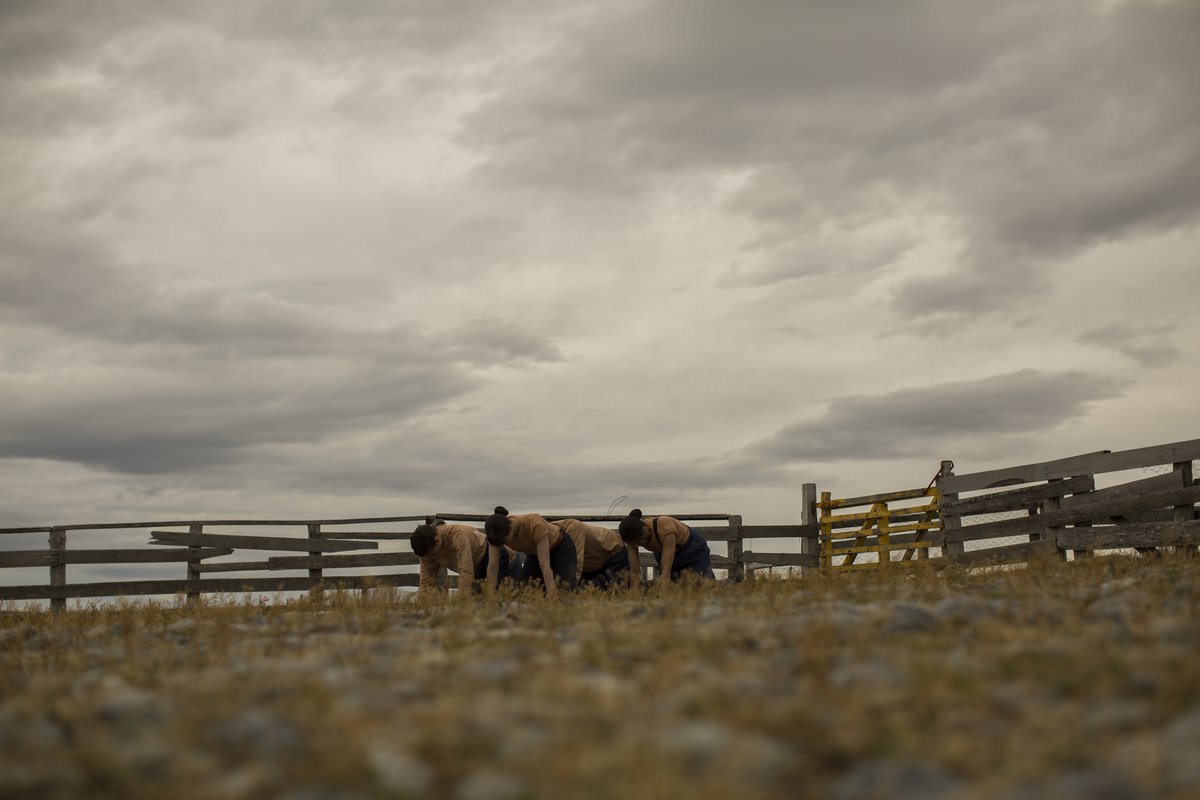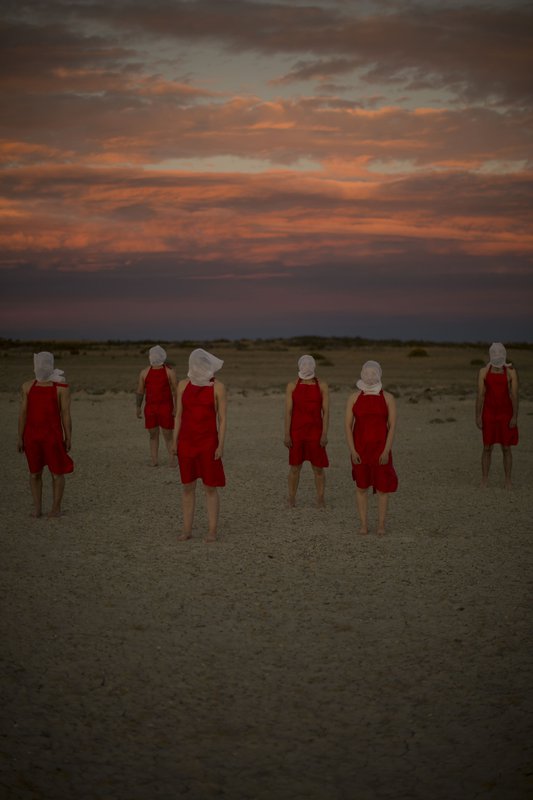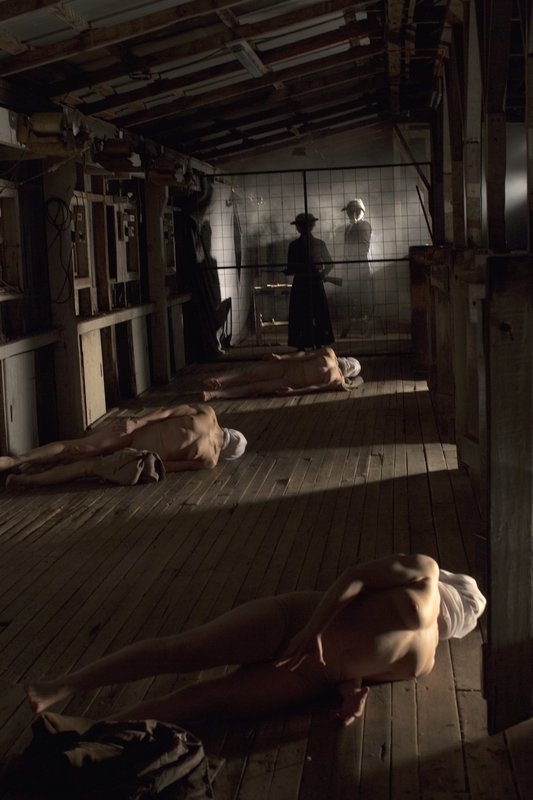Dance
From January 3 to 23 on Teatroamil.tv
Performers: Catalina Balcázar, Irina Miranda, Ángela Melipichún, Roberto Saldivia Bontes, Javier Ojeda Uribe | General Director and Creator: Martín Alonso | Rehearsal Assistant and Choreographer: Catalina Balcázar | Director of Photography and Color Correction: Tomás M. Marzán | Cinematography Supporter and Advisor: Paula de Jesús Robinson Bello | Art, Script and Editing: Martín Alonso | Music: Pablo Vera Velásquez | Drone Operator and Photography: Pedro López | Production Supporter and Advisor: Javier Ojeda Uribe, La Chumanga Producciones | Collaborators: ASKUTÁLAK project, Espacio zur vértice, UmagTV, Cielos del Infinito
*Premiere in April 2021, via UmagTV's digital signal
Proyecto ASKUTÁLAK.
The company
Is a collective that works on dances based on body research. It seeks to contribute to the diffusion of this discipline in the territory of Southern Patagonia. Created in 2018, it is formed by Martín Alonso and Catalina Balcázar, artists, researchers and dance teachers, who work in artistic-educational areas in the city of Punta Arenas, where they collaborate and connect with dance creators and facilitate spaces for the development of new artists. A fundamental aspect of their creative work is the search for the recovery of historical memory. This allows them to generate links and a closer dialogue in the effort of attracting the Southern audience. Some of their plays are Asolación (2018), Antes que Raíz, Tierra (2019), Poética del Gesto (2020), Acerca de una Desolación (2020) and SHEEP (2021).
- In the context of the commemoration of the 500th anniversary of Magallanes’ discovery of the strait that today bears his name, the group of creators observed the reductionist and colonizing visions of the associated activities. Thus, they set out to investigate the unofficial, and often hidden, history of the territory.
- At the beginning of the research, they counted on the collaboration of the Asturian researcher José Luis Alonso Marchante (Menéndez, Rey de la Patagonia; Selk’nam Genocidio y Resistencia). He shared archives and graphic records from 1900 to visualize the territories and the important British industries that existed at that time. In the case of the Magallanes region, there were the cattle ranchers, whose strategy was to take over the territory by exterminating the native people, install their infrastructure and respond efficiently to commercialization. The play is titled Sheep, in allusion to these circumstances.
- Throughout the research process, the creators came across important milestones of the anarchist revolution of unionized Patagonian workers, reaching 80% of the population. What was interesting were the findings that emerged from these organizations, as is the case of the Federación Obrera de Magallanes, which set up a printing press, a theater and a study center for the families. Hence, the creators concentrated on the intellectual discourses that nourished these movements, the graphic images and poetry they published to call their meetings. These elements arose to inspire the work, taking some aspects of their symbology such as the figure of the woman.
Instagram, @askutalakproyecto
PRODUCE

Sheep, la obstinada memoria del viento
By Proyecto ASKUTÁLAK
- Chile
- Spanish
- 28 minutes
- + 12 years
A filmed dance performance about the memory of the workers' movements in Magallanes at the beginning of the 20th century.
SHEEP, la Obstinada Memoria del Viento is a short film that uses dance as a visual and corporal poetic narrative. It proposes an approach to the universe inhabited by the memories and the traces left by the union struggles of the workers' movements in Magallanes at the beginning of the 20th century, between 1911 and 1926.
Through an attractive visual dance language, the short film explores the landscapes of Patagonia, in the extreme south of Chile, through a narrative of images, symbolism and bodies in movement. It aims at broadening our understanding of history and fill the void inherent to the collective memory of Magallanes, regarding an era of colonization processes, exploitation and ethnocide.
Sheep, la obstinada memoria del viento
By Proyecto ASKUTÁLAK
- Chile
- Spanish
- 28 minutes
- + 12 years
A filmed dance performance about the memory of the workers' movements in Magallanes at the beginning of the 20th century.
SHEEP, la Obstinada Memoria del Viento is a short film that uses dance as a visual and corporal poetic narrative. It proposes an approach to the universe inhabited by the memories and the traces left by the union struggles of the workers' movements in Magallanes at the beginning of the 20th century, between 1911 and 1926.
Through an attractive visual dance language, the short film explores the landscapes of Patagonia, in the extreme south of Chile, through a narrative of images, symbolism and bodies in movement. It aims at broadening our understanding of history and fill the void inherent to the collective memory of Magallanes, regarding an era of colonization processes, exploitation and ethnocide.
Performers: Catalina Balcázar, Irina Miranda, Ángela Melipichún, Roberto Saldivia Bontes, Javier Ojeda Uribe | General Director and Creator: Martín Alonso | Rehearsal Assistant and Choreographer: Catalina Balcázar | Director of Photography and Color Correction: Tomás M. Marzán | Cinematography Supporter and Advisor: Paula de Jesús Robinson Bello | Art, Script and Editing: Martín Alonso | Music: Pablo Vera Velásquez | Drone Operator and Photography: Pedro López | Production Supporter and Advisor: Javier Ojeda Uribe, La Chumanga Producciones | Collaborators: ASKUTÁLAK project, Espacio zur vértice, UmagTV, Cielos del Infinito
*Premiere in April 2021, via UmagTV's digital signal
Proyecto ASKUTÁLAK.
The company
Is a collective that works on dances based on body research. It seeks to contribute to the diffusion of this discipline in the territory of Southern Patagonia. Created in 2018, it is formed by Martín Alonso and Catalina Balcázar, artists, researchers and dance teachers, who work in artistic-educational areas in the city of Punta Arenas, where they collaborate and connect with dance creators and facilitate spaces for the development of new artists. A fundamental aspect of their creative work is the search for the recovery of historical memory. This allows them to generate links and a closer dialogue in the effort of attracting the Southern audience. Some of their plays are Asolación (2018), Antes que Raíz, Tierra (2019), Poética del Gesto (2020), Acerca de una Desolación (2020) and SHEEP (2021).
- In the context of the commemoration of the 500th anniversary of Magallanes’ discovery of the strait that today bears his name, the group of creators observed the reductionist and colonizing visions of the associated activities. Thus, they set out to investigate the unofficial, and often hidden, history of the territory.
- At the beginning of the research, they counted on the collaboration of the Asturian researcher José Luis Alonso Marchante (Menéndez, Rey de la Patagonia; Selk’nam Genocidio y Resistencia). He shared archives and graphic records from 1900 to visualize the territories and the important British industries that existed at that time. In the case of the Magallanes region, there were the cattle ranchers, whose strategy was to take over the territory by exterminating the native people, install their infrastructure and respond efficiently to commercialization. The play is titled Sheep, in allusion to these circumstances.
- Throughout the research process, the creators came across important milestones of the anarchist revolution of unionized Patagonian workers, reaching 80% of the population. What was interesting were the findings that emerged from these organizations, as is the case of the Federación Obrera de Magallanes, which set up a printing press, a theater and a study center for the families. Hence, the creators concentrated on the intellectual discourses that nourished these movements, the graphic images and poetry they published to call their meetings. These elements arose to inspire the work, taking some aspects of their symbology such as the figure of the woman.
Instagram, @askutalakproyecto
PRODUCE




